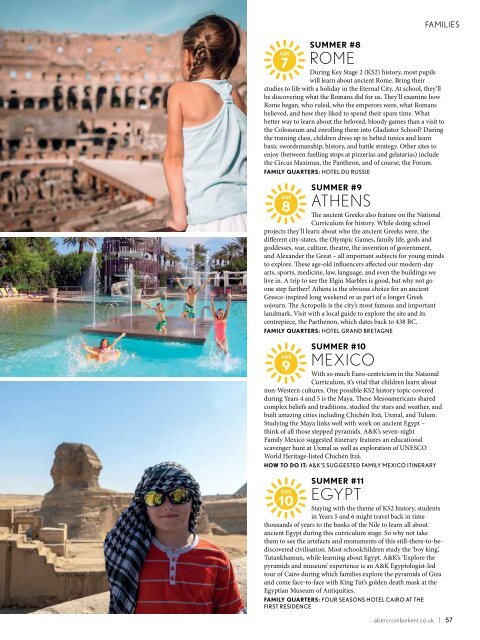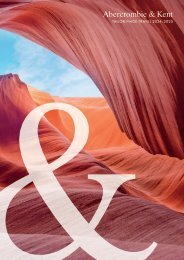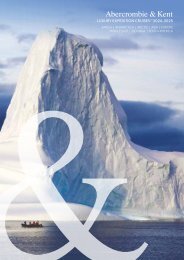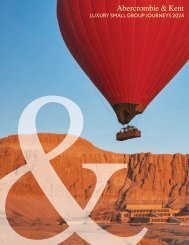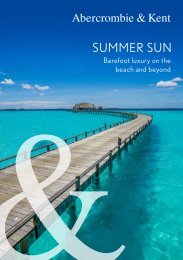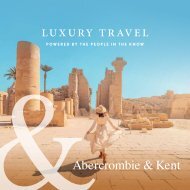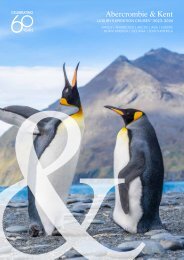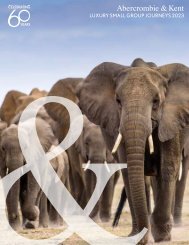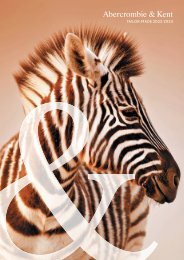Sundowner Magazine: Spring/Summer 2020
You also want an ePaper? Increase the reach of your titles
YUMPU automatically turns print PDFs into web optimized ePapers that Google loves.
AGE<br />
7<br />
SUMMER #8<br />
ROME<br />
During Key Stage 2 (KS2) history, most pupils<br />
will learn about ancient Rome. Bring their<br />
studies to life with a holiday in the Eternal City. At school, they’ll<br />
be discovering what the Romans did for us. They’ll examine how<br />
Rome began, who ruled, who the emperors were, what Romans<br />
believed, and how they liked to spend their spare time. What<br />
better way to learn about the beloved, bloody games than a visit to<br />
the Colosseum and enrolling them into Gladiator School? During<br />
the training class, children dress up in belted tunics and learn<br />
basic swordsmanship, history, and battle strategy. Other sites to<br />
enjoy (between fuelling stops at pizzerias and gelatarias) include<br />
the Circus Maximus, the Pantheon, and of course, the Forum.<br />
FAMILY QUARTERS: HOTEL DU RUSSIE<br />
AGE<br />
8<br />
SUMMER #9<br />
ATHENS<br />
The ancient Greeks also feature on the National<br />
Curriculum for history. While doing school<br />
projects they’ll learn about who the ancient Greeks were, the<br />
different city-states, the Olympic Games, family life, gods and<br />
goddesses, war, culture, theatre, the invention of government,<br />
and Alexander the Great – all important subjects for young minds<br />
to explore. These age-old influencers affected our modern-day<br />
arts, sports, medicine, law, language, and even the buildings we<br />
live in. A trip to see the Elgin Marbles is good, but why not go<br />
one step further? Athens is the obvious choice for an ancient<br />
Greece-inspired long weekend or as part of a longer Greek<br />
sojourn. The Acropolis is the city’s most famous and important<br />
landmark. Visit with a local guide to explore the site and its<br />
centrepiece, the Parthenon, which dates back to 438 BC.<br />
FAMILY QUARTERS: HOTEL GRAND BRETAGNE<br />
AGE<br />
9<br />
SUMMER #10<br />
MEXICO<br />
With so much Euro-centricism in the National<br />
Curriculum, it’s vital that children learn about<br />
non-Western cultures. One possible KS2 history topic covered<br />
during Years 4 and 5 is the Maya. These Mesoamericans shared<br />
complex beliefs and traditions, studied the stars and weather, and<br />
built amazing cities including Chichén Itzá, Uxmal, and Tulum.<br />
Studying the Maya links well with work on ancient Egypt –<br />
think of all those stepped pyramids. A&K’s seven-night<br />
Family Mexico suggested itinerary features an educational<br />
scavenger hunt at Uxmal as well as exploration of UNESCO<br />
World Heritage-listed Chichén Itzá.<br />
HOW TO DO IT: A&K’S SUGGESTED FAMILY MEXICO ITINERARY<br />
AGE<br />
10<br />
SUMMER #11<br />
EGYPT<br />
Staying with the theme of KS2 history, students<br />
in Years 5 and 6 might travel back in time<br />
thousands of years to the banks of the Nile to learn all about<br />
ancient Egypt during this curriculum stage. So why not take<br />
them to see the artefacts and monuments of this still-there-to-bediscovered<br />
civilisation. Most schoolchildren study the ‘boy king’,<br />
Tutankhamun, while learning about Egypt. A&K’s ‘Explore the<br />
pyramids and museum’ experience is an A&K Egyptologist-led<br />
tour of Cairo during which families explore the pyramids of Giza<br />
and come face-to-face with King Tut’s golden death mask at the<br />
Egyptian Museum of Antiquities.<br />
FAMILY QUARTERS: FOUR SEASONS HOTEL CAIRO AT THE<br />
FIRST RESIDENCE<br />
FAMILIES<br />
abercrombiekent.co.uk | 57


